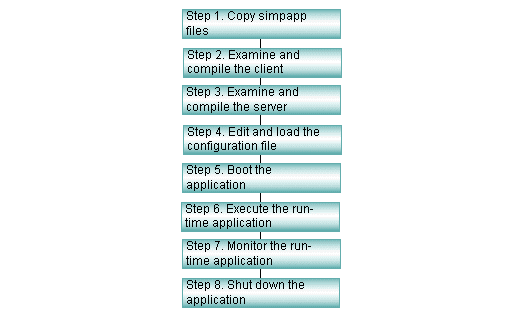


|

|
|
|
|
Preparing simpapp Files and Resources
This topic is a tutorial that leads you, step by step, through the process of developing and running a sample BEA Tuxedo application. The following flowchart summarizes the process. Click on each task for instructions on completing that task.
simpapp Development Process

Before you can run this tutorial, the BEA Tuxedo software must be installed so that the files and commands referred to are available. If the installation has already been done by someone else, you need to know the path name of the directory in which the software is installed (TUXDIR). You also need to have read and write permissions on the directories and files in the BEA Tuxedo directory structure so you can copy simpapp files and execute BEA Tuxedo commands.
About This Tutorial
The instructions for the simpapp tutorial are based on a UNIX system platform. While specific platform instructions for the UNIX operating system environment remain relatively the same, instructions (for example, how to copy simpapp files, set environment variables), for other non-UNIX platforms (such as Windows NT) may be different. Examples used may vary significantly depending on your platform.
What You Will Learn
After you complete this tutorial, you will be able to understand the tasks clients and servers can perform, edit a configuration file for your own environment, and invoke tmadmin to check on the activity of your application. You will understand the basic elements of all BEA Tuxedo applications-client processes, server processes, and a configuration file-and you will know how to use BEA Tuxedo system commands to manage your application.

|

|

|
|
|
|
Copyright © 2000 BEA Systems, Inc. All rights reserved.
|